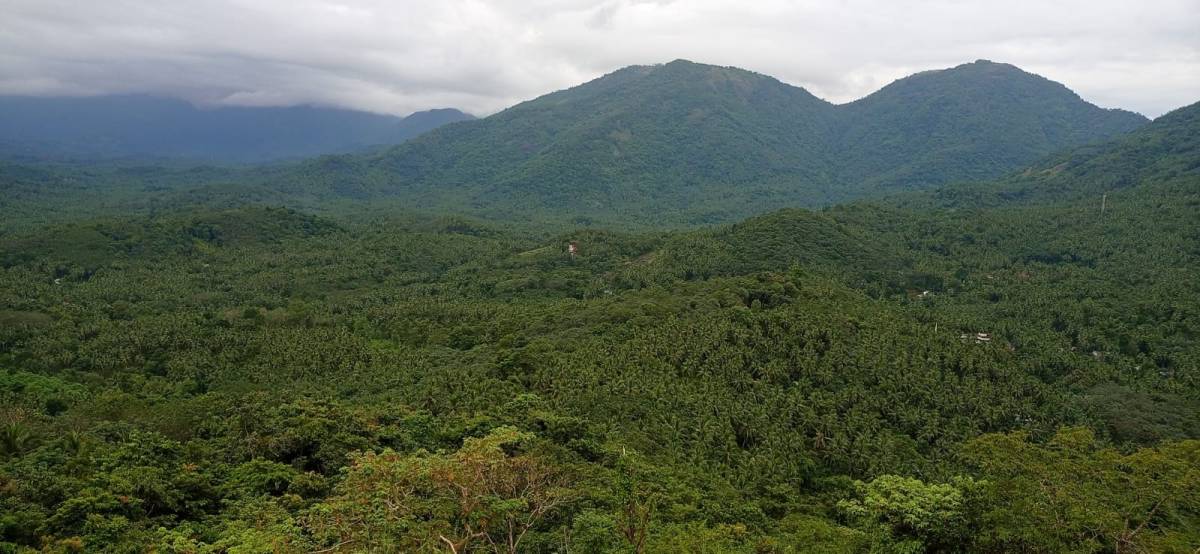The loud noise of heavy machines like jackhammers and excavators along with sudden shocking blasting sounds has spoiled the peaceful living atmosphere, he said…reports Jaison Wilson
A hilly tract of Western Ghats near the scenic and proposed eco-tourism spot Muthachipara in Kerala’s Kozhikode district is slowly losing its calm, and the residents are undergoing harrowing experiences of blasts and landslide threats from a stone quarry in the locality.
At Porali hills, a land of settler farmers, more than 53 home buildings, a school building, and a Church is affected due to the blasting activities by the private quarry operator, Porali Quarry Action Council constituted to oppose the quarry project said.
Action council leader Iype Vadakkethadam, comparing the fragile region to Kavalappara in neighbouring Malappuram district, where more than a dozen people died due to a landslide, said if something happens in this landslide-prone region, the loss will be huge due to the dense population.
“The quarry is causing landslide threat as it is operating on a hillside. Geologically, the quarry is situated at the foot of a big hill of which a major portion is a rock. A large quantity of rock has already been removed from the bottom of this hill structure and countless daily blasts make the hill vulnerable to landslides,” he said.
The loud noise of heavy machines like jackhammers and excavators along with sudden shocking blasting sounds has spoiled the peaceful living atmosphere, he said.
While talking about the social, economic, and environmental impacts of the quarry menace, an award-winning green activist from the district, Prof T. Shobhindran blamed the nexus between quarry owners, hardcore criminals, and politicians. Further, he stressed the need to act against quarrying in Kerala, a state that faces floods, landslides, and rapid climate changes.
National Green Tribunal, court orders, and quarries
The plea of Porali Quarry Action Council before the NGT said the quarry is abetting Reserved Forest and adversely affecting the flora and fauna in the area.
As per studies conducted about landslides happening in similar landscapes, the rainwater will saturate the soil and later the readily weakened hill structure will slide down, devastating the area and lives. A minor landslide has already occurred in the area recently. Pollution of freshwater resources and resulting water scarcity is another problem, it pointed out.
The petitioner stated that not only rock stones are extracted from the Earth’s surface, but a large quantity of topsoil is also removed which is loosely heaped in the boundary of the quarry owner’s land. It later spreads to shallow areas through rainwater streams from the hill, spoiling freshwater sources like ponds and natural streams, which are sources of water for daily needs and farming.
Considering the plea, the green court directed Kerala State Pollution Control Board, State Environmental Impact Assessment Authority (SEIAA), and District Magistrate, Kozhikode district to act on the matter. In the order dated March 30, the tribunal asked the Committee to meet within two weeks and furnish its factual and action taken report within two months.
Earlier in December last year, the NGT had constituted a seven-member joint committee to study the impact of blasting in various stone quarry sites in Kerala with nonel detonation technology at distances of 50 m, 75 m, 100 m, 125 m, 150 m, 200 m and 250 m.
Nonel is a shock tube detonator designed to initiate explosions, generally for the purpose of demolition of buildings and for use in the blasting of rock in mines and quarries.
In November last year, the Supreme Court had held that the quarries in the state should be at least 200 metres away from residential areas agreeing with an earlier NGT order.
Notably, the Kerala government had reduced the minimum distance for quarrying to 50 m in 2016, a move that claimed to boost the development works in the state.
Kasturirangan Committee draft gets delayed
Meanwhile, even after a decade of the Gadgil report and the subsequently appointed High-Level Working Group Dr. K. Kasturirangan Committee report for remedial steps for protection of ecology of the Western Ghats, implementation of the report to conserve the fragile mountain ranges is still a far cry from the actual circumstances.
In the latest notification on December 31, 2021, the Ministry of Environment, Forest, and Climate Change amended the Environment (Protection) Rules, 1986, extending the deadline to notify the new rules till June 30, 2022, due to the Covid pandemic.
Prior to that, while responding to a plea before the National Green Tribunal (NGT) on December 2, 2020, the Union Environment Ministry submitted that the Covid-19 situation has persisted and indicates rising trends in the majority of the States. Despite best efforts, the working in the respective states, including the holding of public consultations and meetings, has been adversely affected, it said.
In this situation, some state governments are yet to provide the information required for finalisation of the Notification of the Western Ghats Ecologically Sensitive Area (ESA). That information is also pending from the states in the context of other Eco-Sensitive Zone (ESZ) draft notifications, the Ministry said responding to the plea filed by petitioner Goa Foundation’s execution application in the matter on December 22.
Notably, the last few years in Kerala, where the Western Ghats cover nearly 56 per cent of the total geographical area, has been facing repeated natural disasters including landslides and flood situations.
Rapid climate changes have also been witnessed in the neighbouring Karnataka, Tamil Nadu, and other states sharing the mountain ranges.
ALSO READ-10-yr-old girl attends classes with sister in lap, wins hearts

Leave a Reply